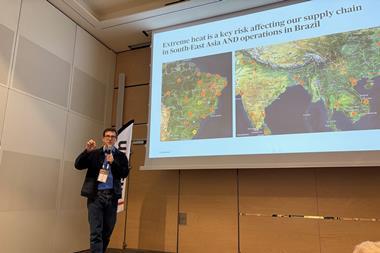EU regulation Rome II should bring greater certainty over liability issues. Wendy Hopkins and Stephen Turner write
From 11 January 2009, all court proceedings commenced in the EU (apart from Denmark), based on torts where the event said to give rise to damage occurred after 20 August 2007, will see the applicable law decided not under national rules but by an EU regulation known as Rome II. Rome II will provide a uniform set of rules to decide which country's law governs substantive issues, principally liability issues, what heads of loss are recoverable and limitation.
Overview
Rome II starts with the general rule (Article 4(1)) that the law of the country in which the damage occurs will apply, unless (Article 4(2)) the claimant and defendant are both ‘habitually resident’ in the same country (when that country's law shall apply) or (Article 4(3)) the tort is ‘manifestly more closely connected’ with another country, when that country's law will apply.
Does it matter which country's law applies? Yes, potentially: for example, an English driver will suddenly become strictly liable to their passenger under French law (whereas English law requires proof of negligence).
Does Rome II matter? It is likely to matter a great deal. Companies with EU-wide operations will see the same ‘code’ used in all EU courts (except Denmark) to decide which country's law applies to tort claims. This should lead to greater certainty, over which country to litigate in.
Interpreting Rome II
Doubts may remain as to whether different countries' courts will apply the Rome II rules in the same way. Ultimately, the European Court of Justice will decide. This may be one of the most important consequences of Rome II as its boundaries, and ambiguities, will be decided by the ECJ rather than a national court. We can expect some interesting results.
Assessing damages
If an employee travelling on business in the EU causes a road accident, the foreign victim would, prior to Rome II, have had a clear incentive to bring proceedings in England, where traditionally higher damages are awarded. The House of Lords has decided that all issues of quantification of damages were for the court hearing the case. However, teasingly, Article 15(c) of Rome II provides that the law determined under Rome II – in practice, that of the foreign country in which the accident occurred – will govern matters including ‘the existence, the nature and the assessment of damage or the remedy claimed’.
“Rome II will provide a uniform set of rules to decide which country's law governs substantive issues.
The actual quantification of damages may be regarded as a matter of procedural law and for the court in which proceedings are commenced. However it is premature to rule out at least an argument before the ECJ that ‘assessment’ should be given its ‘ordinary meaning’ and that it includes quantification of damages payable. This would substantially reduce the attraction of the English courts to injured claimants.
Product liability
The provisions of Rome II dealing with product liability seek to address the particular issues faced by a company selling products which will be bought or used by a consumer in another country.
An example given by those involved in the introduction of the regulation was the position where an EU citizen suffered injury using a product on holiday, say, in Thailand: would Thai law apply to the claim against an EU based manufacturer, since Thailand was the country in which the claimant suffered damage? Article 5 sets out a cascade of options specifically for product liability claims whereby a court will apply:
(a) the law of the country where the claimant is habitually resident, if the product was marketed there; or
(b) the law of the country where the product was acquired, if the product was marketed there; or
(c) the law of the country where the damage occurred if the product was marketed there, plus a carve-out for another country if that is manifestly more closely connected with the tort.
Companies operating in the EU will already be used to considering not only whether they may face civil liability to consumers, to which Rome II is relevant, but also their responsibilities for safety under the existing general Product Safety Directive and general Food Law Regulation.
It will be interesting to see how Rome II is interpreted and applied, whether it brings greater certainty to cross-border tort-based disputes and whether, particularly for injury claims, it helps to reduce the cost of claims – watch this space.
Postscript
Wendy Hopkins is a partner and Stephen Turner an associate in the products liability and risk group at law firm Beachcroft LLP
















No comments yet